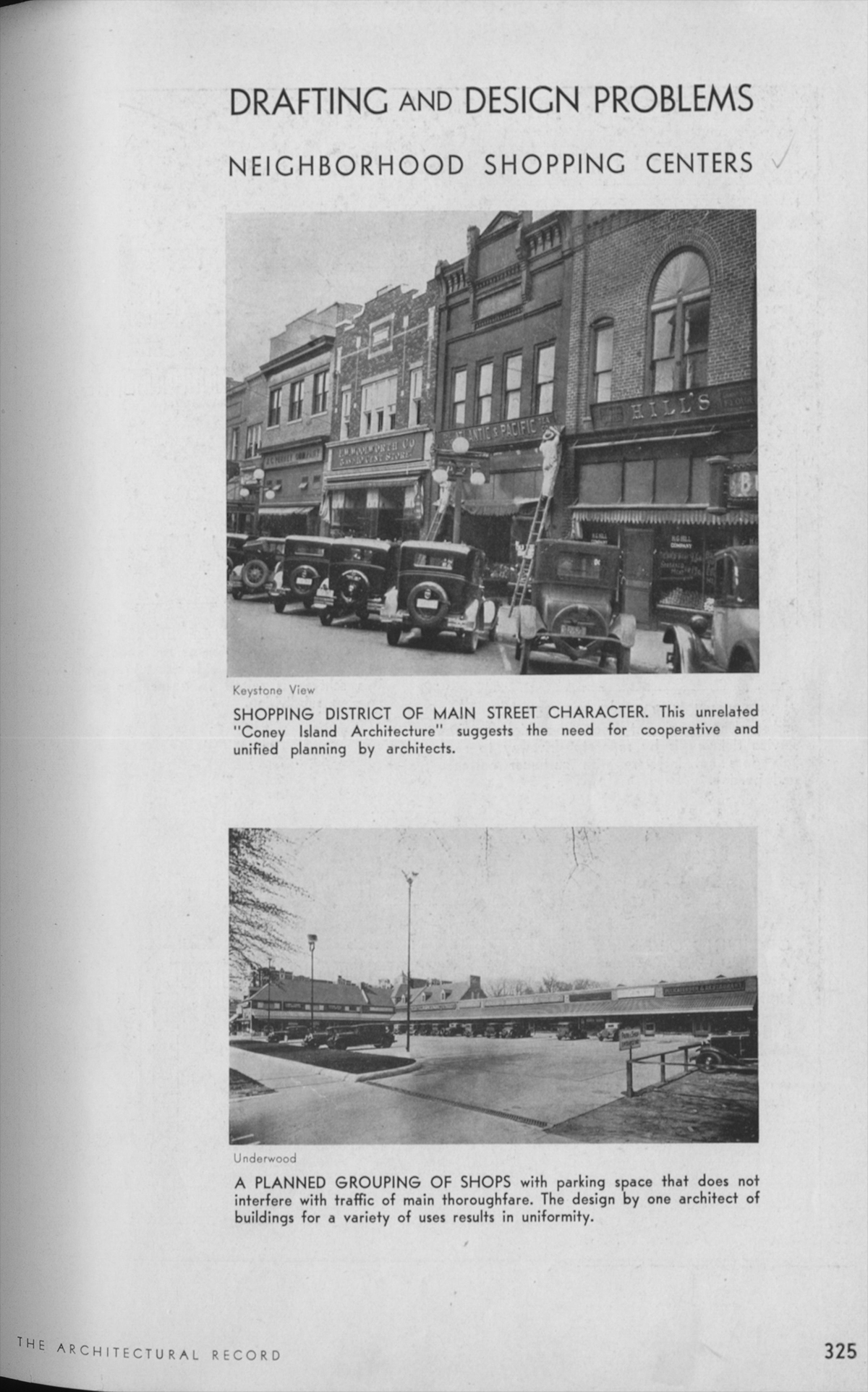
I think a number of people are perplexed as to why Sam’s Park & Shop in Cleveland Park is landmarked. Aside from the political pressure of a well-connected population dead set on preventing the density that would actually save their failing retail strip using historic preservation laws, the site does have some significance.
The Park & Shop was point along the trend to adapt retail architecture to modern conditions. In this page from the May 1932 Architectural Record, the author praised the Park & Shop in contrast to a traditional main street retail strip. He might as well have been describing the service lane block.
I think a lot of people look back on the beginnings of autocentric planning and think that the people who conceived it must have been deluded, but to them these choices seem eminently rational. A lot of people also seem to pin the autocentric turn on the Modern Movement and Le Corbusier in particular. This issue of the Record points in another direction: it is unequivocal about the need to redesign retail for the automobile, and merely reports on the International Style as an interesting trend in Europe with good goals.
If anything, Modernism was just a way to aestheticize the rationalist fixations of Modernity like efficiency, objectivity, or hygiene. After all, the first auto-oriented shopping malls were executed in historicist styles. The movement away from urban life began well before that, although Modernists certainly took it further.
It’s a complicated story, one that I don’t really know much about. Luckily, one of my professors, David Smiley, wrote a book about it. Pedestrian Modern, how the desire to accommodate the automobile and pedestrian safely crossed with American modernists’ interest in retail, before 1960s radicalism made that contaminated.
Our Park & Shop comes in towards the beginning of the story.
